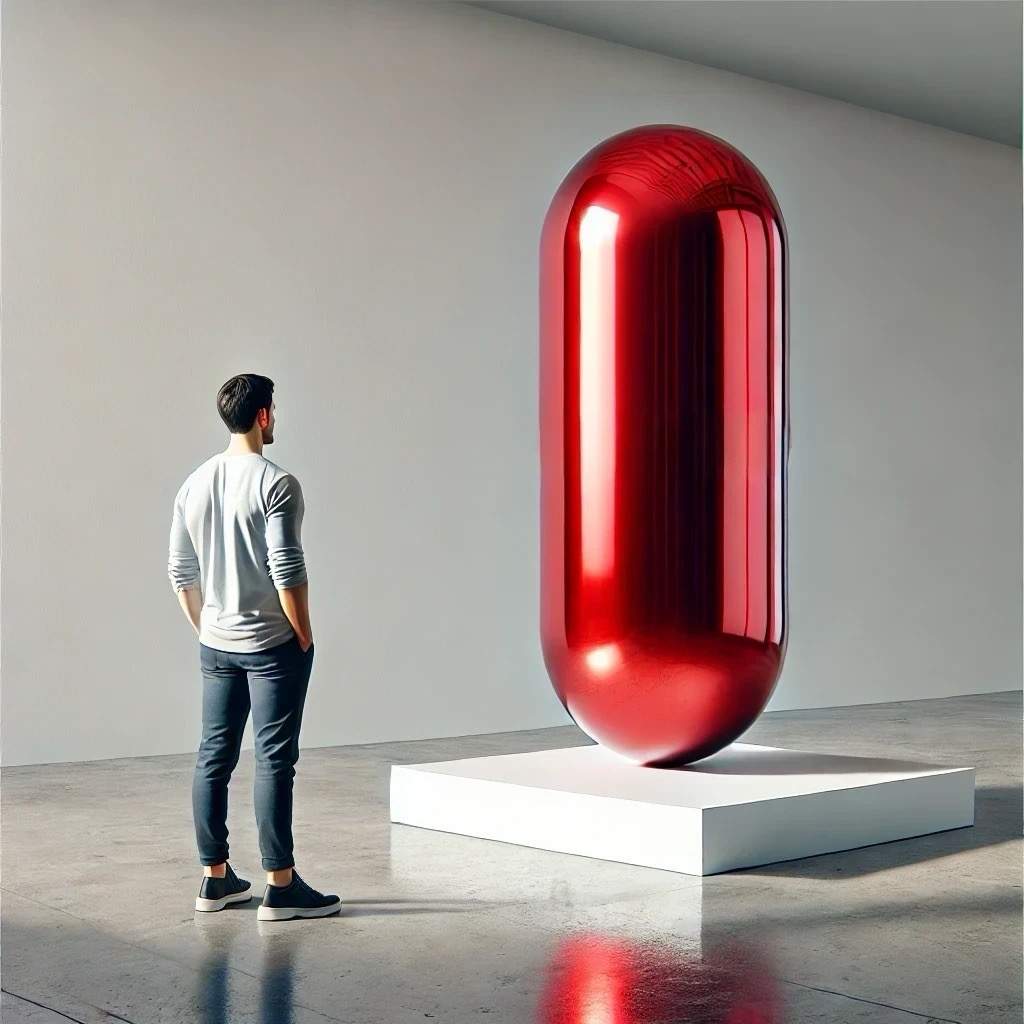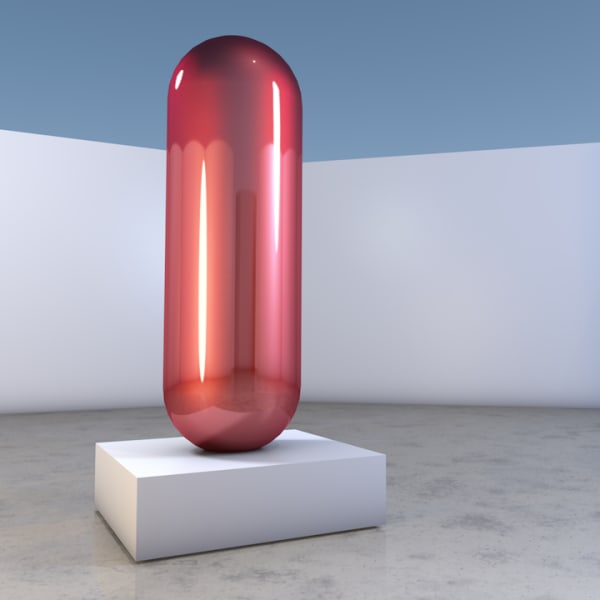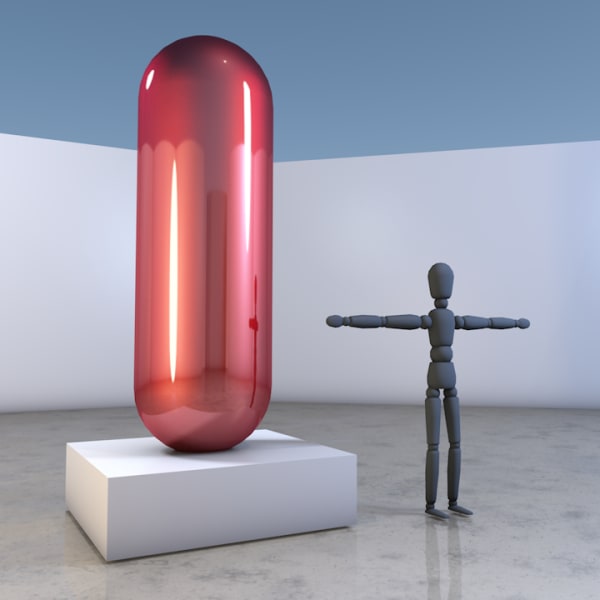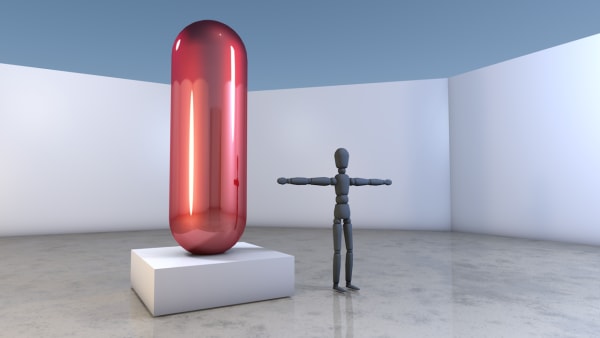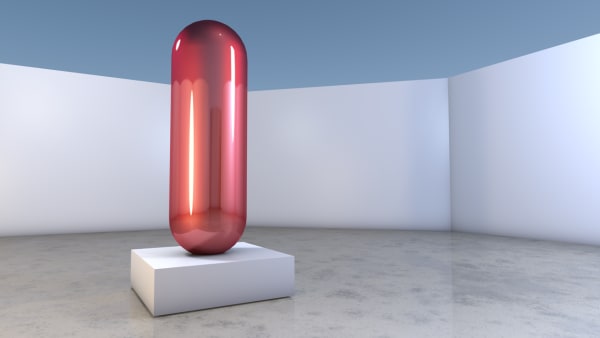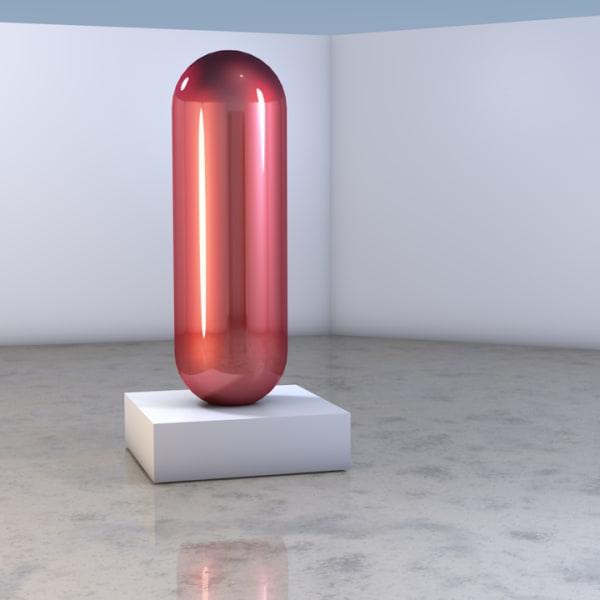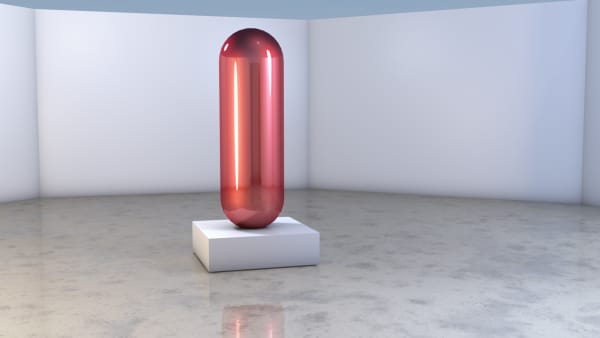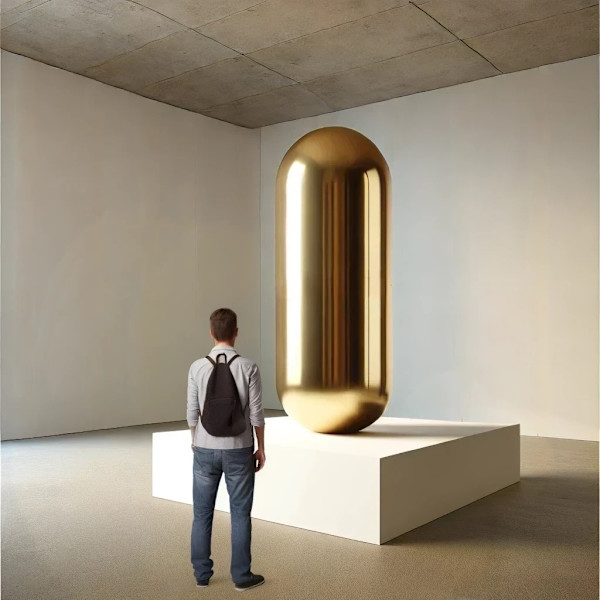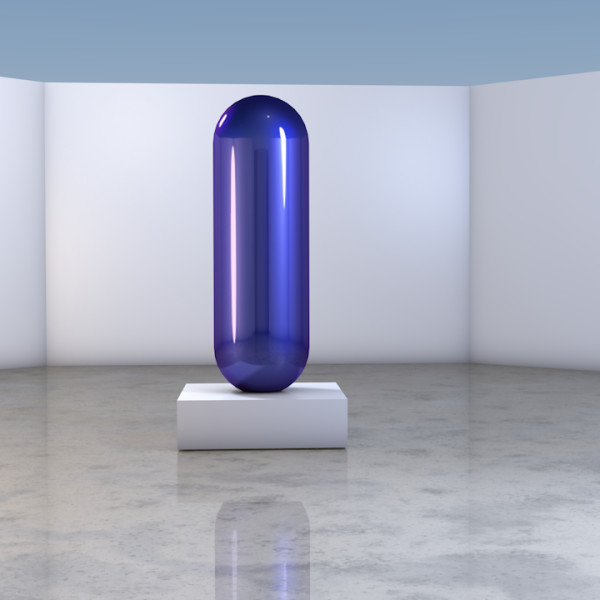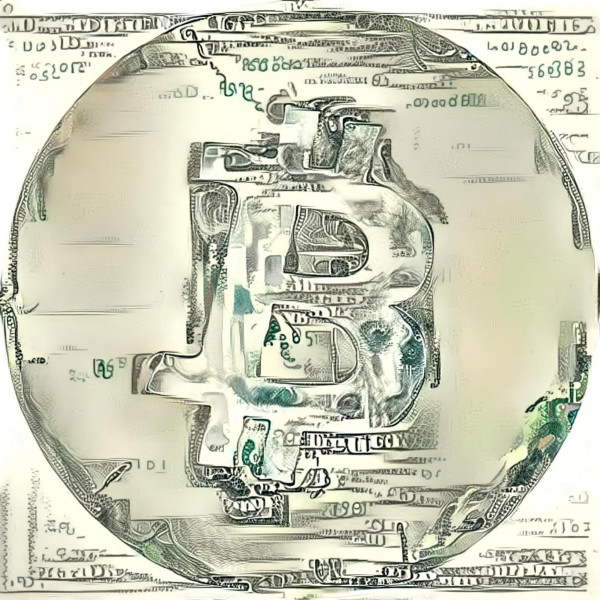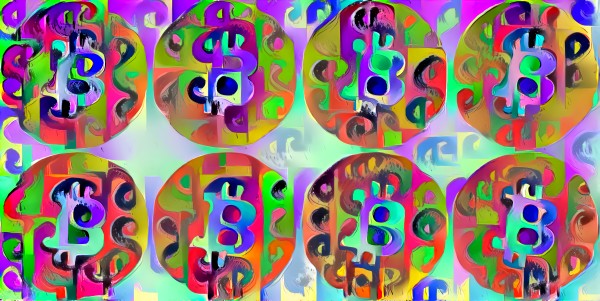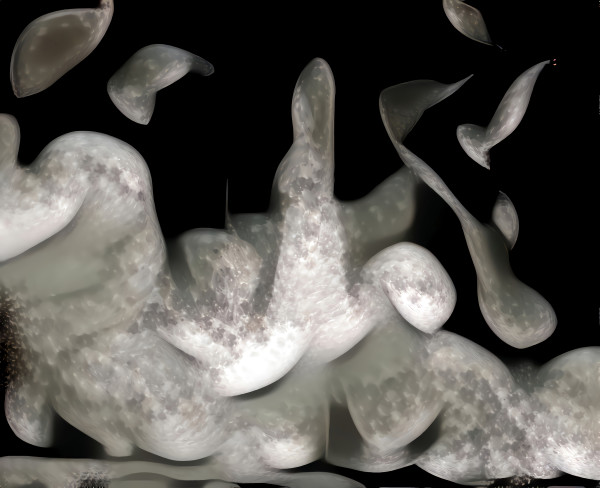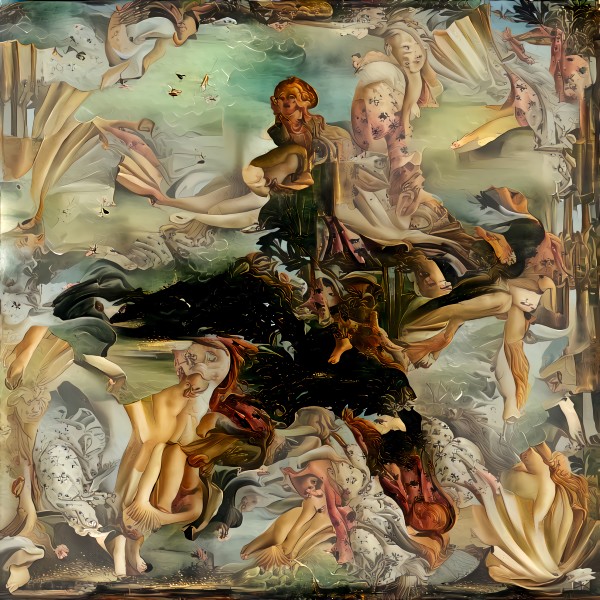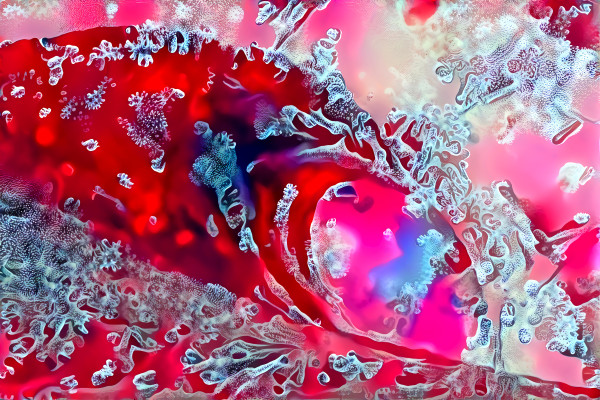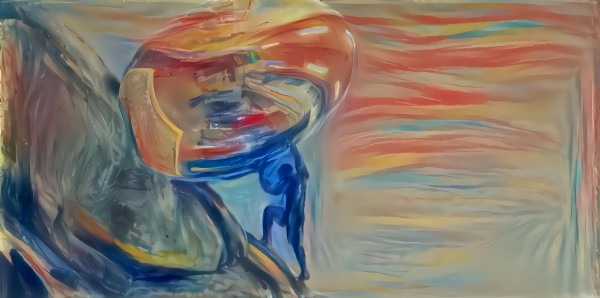Pill (Red, Blue, Gold) (2021)
Brendon McNaughton’s Pill (Red, Blue, Gold) series transforms the capsule into a monumental sculpture of human behavior and belief. Pill (Red) and Pill (Blue) recall The Matrix (1999): the choice between illusion and truth. McNaughton disrupts this binary with Pill (Gold), symbolizing the mindset shift of seeing wealth itself as society’s ultimate prescription.
The works’ reflective surfaces recall the seductions of commodity culture and the mirrored polish of Pop icons, inviting viewers to see themselves within the object. Yet the meaning remains unsettled: is wealth a cure that stabilizes life, or an addiction that deepens dependence?
Catalogue Description
Pill (Red, Blue, Gold) (2021)
At monumental scale, Brendon McNaughton’s Pill (Red, Blue, Gold) series transforms the ordinary capsule into a gleaming totem of contemporary existence. Fabricated in steel and finished with reflective surfaces, the works shimmer with seductive allure, echoing the mirrored polish of consumer commodities and the gleam of Pop Art icons.
Pill (Red) and Pill (Blue) recall The Matrix (1999), where choice is framed as a binary: comfort or truth, illusion or reality. McNaughton introduces a third option, Pill (Gold), which reframes the narrative through the lens of wealth. If pharmaceuticals heal the body, then money functions as the prescription sustaining modern life.
Here, the metaphor sharpens. Pill (Gold) positions wealth as a pharmakon—the ancient Greek term for both remedy and poison. Money appears as cure: offering stability, freedom, and opportunity. Yet it also functions as toxin: creating inequity, anxiety, and dependency. McNaughton asks whether wealth is the medicine that makes us well, or the addiction from which we cannot withdraw.
By enlarging the capsule to monumental scale and rendering it in seductive, reflective finish, McNaughton magnifies what is usually swallowed and forgotten into an object of awe, compulsion, and unease. In this transformation, the Pill series situates itself within the lineage of Duchamp’s readymades, Warhol’s commodities, and Koons’s polished icons, while pressing urgently on the pharmaceutically—and financially—inflected realities of the twenty-first century.
The Pill sculptures crystallize a question central to contemporary life: if wealth is our prescription, what illness does it treat? And if it is addiction, can we ever live without it?
